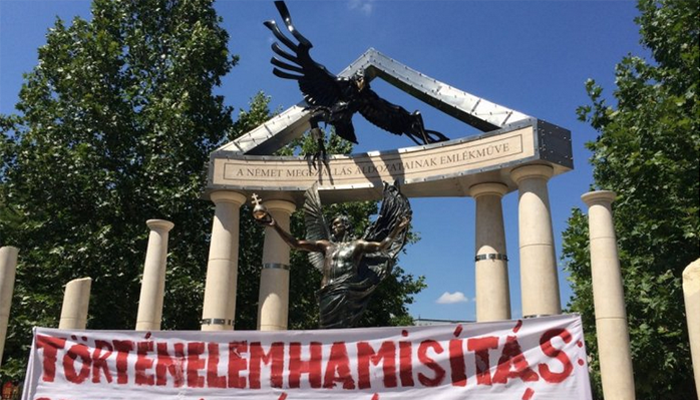Watching the UK battle over Edward Colston and Cecil Rhodes’s statues in recent days, there are some interesting parallels to draw from Hungary (my ‘other’ country).
Over here the ‘memory politics’ of Hungary is sharply contested because of the legacy of 20th century totalitarianism. It’s raw stuff. Despite the soft edge of later ‘Goulash Communism’, crimes of violence, property confiscation and imprisonment are still within living memory. So are the painful compromises people made with state power and their own consciences.
Hungary’s democratic transition of 1989/90 was a negotiated settlement — not a violent revolution — and suspect officials were pensioned off, rather than prosecuted. The state’s light treatment of these ex-party functionaries was also reflected in its handling of legacy monuments. Budapest’s statues were not torn down but gently retired to the Memento Park — a sort of statue graveyard on the city’s outskirts.
Monuments to Marx, Lenin, the Magyar-Soviet Friendship and local communist apparatchiks are arranged thematically along boulevards bearing names like “The Endless Parade of Liberation Monuments” and “The Unending Promenade of Worker’s Movement Concepts”. Excellent interpretive materials identify the unsavoury deeds of the persons depicted; grand architectural facades (sans buildings) signal the hollowness of communist rhetoric.

Last time I visited, years ago, the gift shop sold empty bottles labelled ‘The Last Breath of Communism’ (air bottled on the last day of one party-rule) while the buffet dispensed full glasses of a lethally alcoholic drink called the ‘Molotov cocktail’. The place is a hoot and proof of Martin Luther’s maxim “The best way to drive out the devil… is to jeer and flout him”. Mind you, the overblown theatricality of many of the statues lend themselves to mockery without external help.
Post-2010, the year Fidesz came to power, memorialisation in Hungary has been hotly contested once again. First civic groups with official blessing, and later the government itself, began to rehabilitate controversial figures from Hungary’s past: setting up memorials to divisive interwar and wartime figures like the anti-Semite Bishop Ottokár Prohászka and Regent Miklós Horthy along with memorials which radically re-interpreted Hungary’s role in the Holocaust.
Debate over these monuments tends to obscure a curious fact. As part of the fiercly ‘anti-communist’ Viktor Orbán’s “cultural era”, public art has reprised the aesthetic register which dominated Hungary when today’s leaders were Young Pioneers. Immensity of scale, histrionic gesture and insensitivity to locale are all back: kitsch is king.
So what are the lessons from Hungary’s recent statue experience? Well, firstly, that mockery may trump destruction; and, secondly, that the first casualty of authoritarianism is taste.











Join the discussion
Join like minded readers that support our journalism by becoming a paid subscriber
To join the discussion in the comments, become a paid subscriber.
Join like minded readers that support our journalism, read unlimited articles and enjoy other subscriber-only benefits.
Subscribe